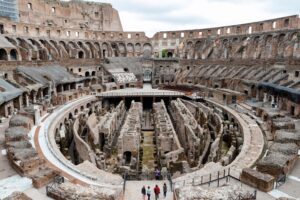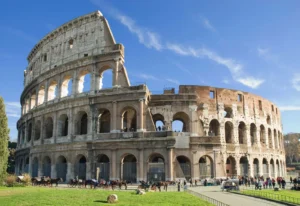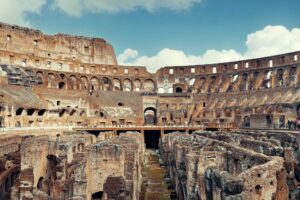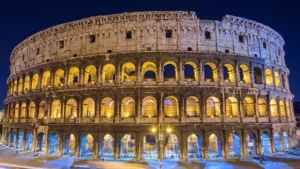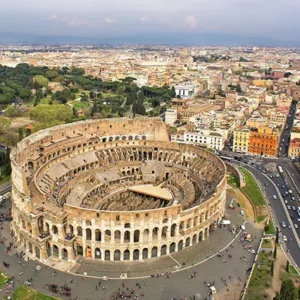Description
The Colosseum, known as the Colosseo in Italian, is an iconic symbol of ancient Rome and one of the most recognizable structures in the world. Constructed between 70-80 AD under the emperors Vespasian and Titus, this colossal amphitheatre could accommodate up to 80,000 spectators and was primarily used for gladiatorial contests, public spectacles, and various forms of entertainment. Its elliptical shape, measuring 189 meters long and 156 meters wide, showcases the architectural ingenuity of the time, combining elements of Roman engineering with grand aesthetics.
Visitors to the Colosseum can expect to be awestruck by its massive stone façade and intricate architectural details, which have withstood the test of time despite centuries of natural disasters and human intervention. As you step inside, you will be transported back to the days of gladiators battling for glory and the roars of enthusiastic crowds echoing throughout the arena. Various levels and seating sections are accessible, providing unique perspectives on the amphitheatre's scale and design. The interior, with its complex system of tunnels and chambers, reveals how the Colosseum operated, including the mechanisms used to raise and lower animals and scenery for the shows.
A visit to the Colosseum is not just a journey through history; it is an experience that connects you to the heart of Roman culture and its enduring legacy. Guided tours often include insightful narratives about the amphitheatre's construction, its significance in Roman society, and tales of the fierce gladiators who fought there. The Colosseum is also conveniently located near other major attractions, such as the Roman Forum and Palatine Hill, making it a must-see for anyone exploring Rome. For history buffs, architecture enthusiasts, and curious travellers alike, the Colosseum stands as a testament to human creativity, resilience, and the age-old desire for entertainment.
Location
-
Piazza del Colosseo, 1, 00184 Roma, RM, Italy

